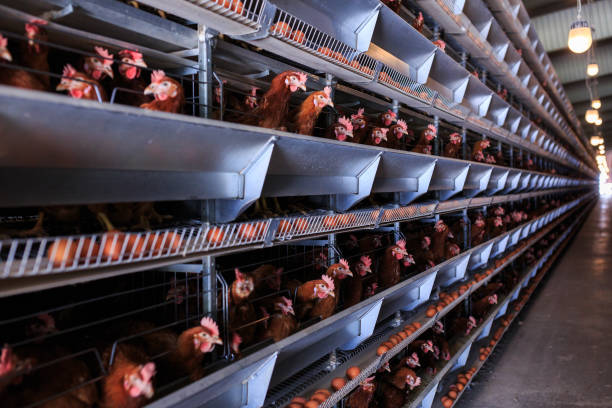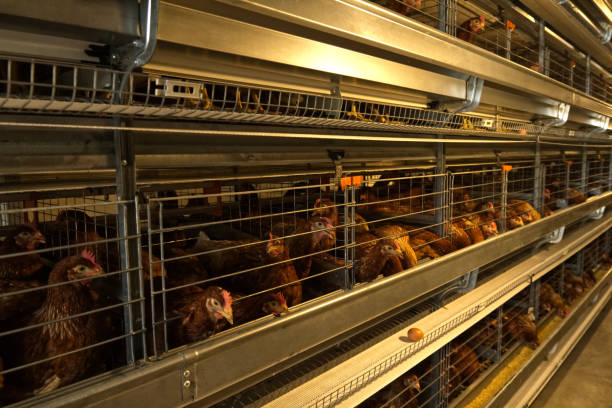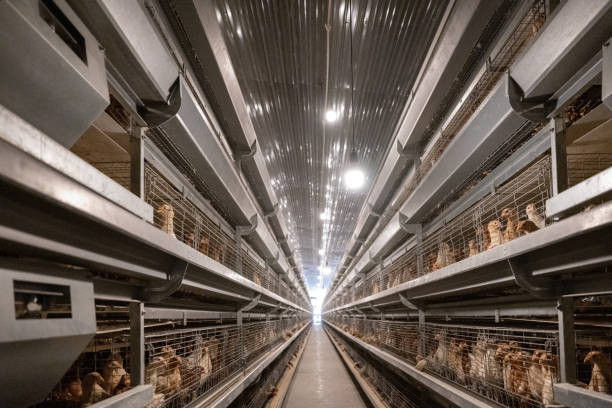# Starting a Profitable Layer Farm: A Business Plan for Ghana
Ghana’s agricultural sector holds immense potential, and poultry farming, particularly layer farming for egg production, presents a compelling business opportunity. Driven by increasing urbanization, rising disposable incomes, and changing dietary habits, the demand for eggs in Ghana is steadily growing. This article provides a comprehensive business plan framework designed to guide aspiring entrepreneurs in establishing a successful and profitable layer farm in Ghana. We’ll delve into key aspects including market analysis, production strategies, financial projections, and risk mitigation, offering practical insights tailored to the Ghanaian context.
**I. Executive Summary:**
This business plan outlines the steps required to establish and operate a profitable layer farm in Ghana. The farm will focus on producing high-quality eggs for the local market, catering to both individual consumers and commercial clients such as restaurants, bakeries, and supermarkets. The business model emphasizes efficient production methods, stringent quality control, and effective marketing strategies to achieve sustainable profitability and growth. The plan incorporates a detailed financial analysis, including start-up costs, operating expenses, revenue projections, and profitability forecasts, demonstrating the viability and attractiveness of this venture. The business will prioritize sustainable practices and community engagement.
**II. Market Analysis:**
Understanding the market dynamics is crucial for success. This section examines the demand for eggs in Ghana, analyzes the competitive landscape, and identifies potential market segments.
* **Demand Analysis:** The demand for eggs in Ghana is influenced by several factors. Population growth, especially in urban areas, is a primary driver. As more people move to cities, their dietary habits tend to shift towards readily available and convenient food sources like eggs. Furthermore, rising disposable incomes allow consumers to afford more protein-rich foods. Eggs are also increasingly recognized for their nutritional value and affordability, making them a popular choice for families. Surveys and market research indicate an increasing per capita egg consumption in Ghana.
* **Competitive Landscape:** While the demand is high, the layer farming industry in Ghana isn’t without competition. Existing players range from small-scale backyard producers to larger, commercially-operated farms. It’s essential to analyze the strengths and weaknesses of these competitors. Key factors to consider include their production capacity, pricing strategies, distribution networks, and quality control measures. The analysis should also identify potential areas of differentiation for the new farm, such as offering higher quality eggs, focusing on specific market niches (e.g., organic eggs), or implementing more efficient production practices to lower costs.
* **Target Market:** Defining the target market is key to tailoring the farm’s production and marketing efforts. Potential target markets include:
* **Individual Consumers:** Direct sales to consumers through local markets, roadside stalls, or even a farm-gate store can provide good margins.
* **Retailers:** Building relationships with supermarkets, grocery stores, and smaller retail outlets can provide a stable sales channel.
* **Restaurants and Bakeries:** These businesses rely on a consistent supply of eggs for their operations. Establishing contracts with them can ensure a steady demand for the farm’s produce.
* **Hotels and Guest Houses:** Similar to restaurants, hotels and guest houses are reliable consumers of eggs.
* **Schools and Institutions:** Supplying eggs to schools, hospitals, and other institutions can offer a significant market volume.
* **Market Trends & Opportunities:** Several trends present opportunities for layer farmers in Ghana:
* **Growing Demand for Quality:** Consumers are increasingly discerning about the quality of eggs they purchase. Farms that can consistently provide fresh, clean, and healthy eggs will have a competitive advantage.
* **Organic and Free-Range Eggs:** There’s a growing demand for organic and free-range eggs among health-conscious consumers. This segment commands higher prices and can be a profitable niche.
* **Value-Added Products:** Exploring value-added products like processed egg products (e.g., boiled eggs, egg powder) can broaden the farm’s revenue streams.
**III. Production Plan:**
This section details the operational aspects of the layer farm, covering everything from breed selection to waste management.
* **Breed Selection:** Choosing the right breed of layer chicken is crucial for egg production efficiency. Factors to consider include egg-laying capacity, feed conversion ratio, disease resistance, and adaptability to the local climate. Popular breeds for egg production in Ghana include:
* **ISA Brown:** Known for their high egg-laying rate and adaptability.
* **Lohmann Brown:** Another high-producing breed with good feed efficiency.
* **Hy-Line Brown:** Renowned for their consistent egg production and docile temperament.
Consulting with poultry experts and local farmers is advisable to select the most suitable breed for specific farm conditions and market requirements.
* **Housing:** Providing adequate housing is essential for the health and productivity of the birds. The housing system can be either:
* **Deep Litter System:** This involves keeping the birds on a floor covered with litter material like wood shavings or rice husks. It requires more space but can provide better welfare for the chickens.
* **Cage System:** This involves housing the birds in cages. It’s more space-efficient and allows for easier egg collection and cleaning. *[**Disclaimer:** Be mindful of evolving animal welfare standards; cage-free systems are increasingly favored in many markets.]*
The housing should be well-ventilated, provide adequate lighting, and protect the birds from extreme weather conditions and predators.
* **Feeding:** Providing a balanced and nutritious diet is critical for optimal egg production. Layer chickens require a diet that is rich in protein, carbohydrates, vitamins, and minerals. A feed formulation should be developed in consultation with a nutritionist to ensure that the birds receive the necessary nutrients at each stage of their development. Sourcing feed ingredients locally can help reduce feed costs.
* **Health Management:** Maintaining the health of the flock is essential for preventing disease outbreaks and minimizing losses. This involves implementing a strict biosecurity program, vaccinating the birds against common poultry diseases, and providing regular health checks. It’s also important to have a relationship with a qualified veterinarian who can provide prompt and effective treatment in case of illness.
* **Egg Collection and Handling:** Eggs should be collected regularly, preferably twice a day, to minimize breakage and contamination. Collected eggs should be cleaned, graded, and stored in a cool, dry place. Timely egg handling and storage are key to maintain quality and freshness.
* **Waste Management:** Proper waste management is essential for environmental sustainability and preventing the spread of diseases. Manure can be processed into fertilizer for use on crops or sold to other farmers. Composting is another effective method of waste management. Explore sustainable practices and adhere to environmental regulations to avoid polluting the environment.
**IV. Marketing and Sales Strategy:**
Effective marketing and sales strategies are essential for reaching the target market and maximizing sales. This section outlines the steps involved in promoting and selling the farm’s eggs.
* **Branding and Packaging:** Developing a strong brand identity can help differentiate the farm’s eggs from competitors. This involves creating a logo, designing attractive packaging, and communicating the unique benefits of the farm’s eggs (e.g., freshness, quality, organic production).
* **Distribution Channels:** Establishing efficient distribution channels is key to reaching the target market. Potential distribution channels include:
* **Direct Sales:** Selling eggs directly to consumers through local markets, roadside stalls, or a farm-gate store.
* **Retail Partnerships:** Partnering with supermarkets, grocery stores, and smaller retail outlets to sell eggs.
* **Wholesale:** Supplying eggs to restaurants, bakeries, hotels, and other institutions.
* **Online Sales:** Utilizing online platforms and social media to market and sell eggs directly to consumers.
* **Pricing Strategy:** Determining a competitive pricing strategy is crucial for attracting customers while maintaining profitability. Factors to consider include production costs, market prices, and the perceived value of the farm’s eggs.
* **Promotion and Advertising:** Utilizing various promotional methods to raise awareness of the farm’s eggs. Potential promotional methods include:

* **Local Advertising:** Advertising in local newspapers, radio stations, and community events.
* **Social Media Marketing:** Using social media platforms to promote the farm’s eggs and engage with potential customers.
* **Participating in Agricultural Fairs and Exhibitions:** Showcasing the farm’s eggs at agricultural fairs and exhibitions.
* **Offering Discounts and Promotions:** Attracting customers with discounts and special promotions.
**V. Management Team:**
The success of the layer farm depends on the skills and experience of the management team.
* **Organizational Structure:** The organizational structure should clearly define roles and responsibilities. A typical organizational structure might include:
* **Farm Manager:** Responsible for overseeing all aspects of the farm operations, including production, marketing, and finance.
* **Poultry Technician:** Responsible for managing the health and welfare of the birds.

* **Sales and Marketing Officer:** Responsible for promoting and selling the farm’s eggs.
* **General Laborers:** Responsible for performing day-to-day tasks such as feeding, cleaning, and egg collection.
* **Key Personnel:** Identifying individuals with relevant experience and expertise is essential. The farm manager should have experience in poultry farming and business management. The poultry technician should have a strong understanding of poultry health and disease prevention.
* **Advisory Board:** Establishing an advisory board consisting of experienced poultry farmers, business advisors, and financial experts can provide valuable guidance and support.
**VI. Financial Projections:**
This section presents a detailed financial analysis, including start-up costs, operating expenses, revenue projections, and profitability forecasts.
* **Start-up Costs:** Include land acquisition or lease, construction of housing, purchase of equipment (e.g., feeders, drinkers, egg incubators), purchase of chicks, initial feed costs, and licensing fees.
* **Operating Expenses:** Include feed costs, labor costs, veterinary expenses, electricity costs, water costs, transportation costs, marketing expenses, and administrative expenses.
* **Revenue Projections:** Based on the estimated egg production and sales price, project the annual revenue for the next 3-5 years.
* **Profitability Forecasts:** Calculate the net profit, return on investment (ROI), and payback period to assess the financial viability of the project.
* **Funding Sources:** Identify potential funding sources, such as personal savings, bank loans, grants, and investments. A well-structured business plan is essential for securing funding.
**VII. Risk Assessment and Mitigation:**
Identifying potential risks and developing mitigation strategies is crucial for protecting the farm’s investment and ensuring its long-term sustainability.
* **Disease Outbreaks:** Implementing a strict biosecurity program, vaccinating the birds, and having a contingency plan in place can mitigate the risk of disease outbreaks.
* **Feed Price Fluctuations:** Sourcing feed ingredients locally, establishing long-term contracts with feed suppliers, and exploring alternative feed sources can mitigate the risk of feed price fluctuations.
* **Market Price Volatility:** Diversifying sales channels, developing a strong brand identity, and offering value-added products can mitigate the risk of market price volatility.
* **Environmental Risks:** Implementing proper waste management practices and complying with environmental regulations can mitigate environmental risks.
* **Political and Economic Instability:** Diversifying the business portfolio and establishing strong relationships with government agencies can mitigate the risk of political and economic instability.
**VIII. Sustainability and Social Responsibility:**
Prioritizing sustainability and social responsibility is essential for building a long-term and ethical business.
* **Environmental Sustainability:** Implementing sustainable farming practices, such as using renewable energy sources, conserving water, and managing waste effectively, can minimize the farm’s environmental impact.
* **Animal Welfare:** Providing a humane and comfortable environment for the birds, ensuring their health and well-being, and adhering to ethical animal welfare standards.
* **Community Engagement:** Engaging with the local community, providing employment opportunities, and supporting local initiatives can build goodwill and foster positive relationships。
* **Ethical Business Practices:** Conducting business with integrity, transparency, and fairness.
**IX. Conclusion:**

Starting a layer farm in Ghana presents a significant business opportunity, driven by the growing demand for eggs and the potential for profitability. By developing a comprehensive business plan, implementing efficient production practices, and adopting effective marketing strategies, aspiring entrepreneurs can establish successful and sustainable layer farms that contribute to the Ghanaian economy and provide nutritious food for the population. This business plan serves as a roadmap, highlighting the critical factors for success. Remember to adapt this template to your specific circumstances, conduct thorough research, and seek expert advice along the way. The future of Ghana’s layer farming industry is bright, and with careful planning and execution, your farm can be a valuable part of it.






